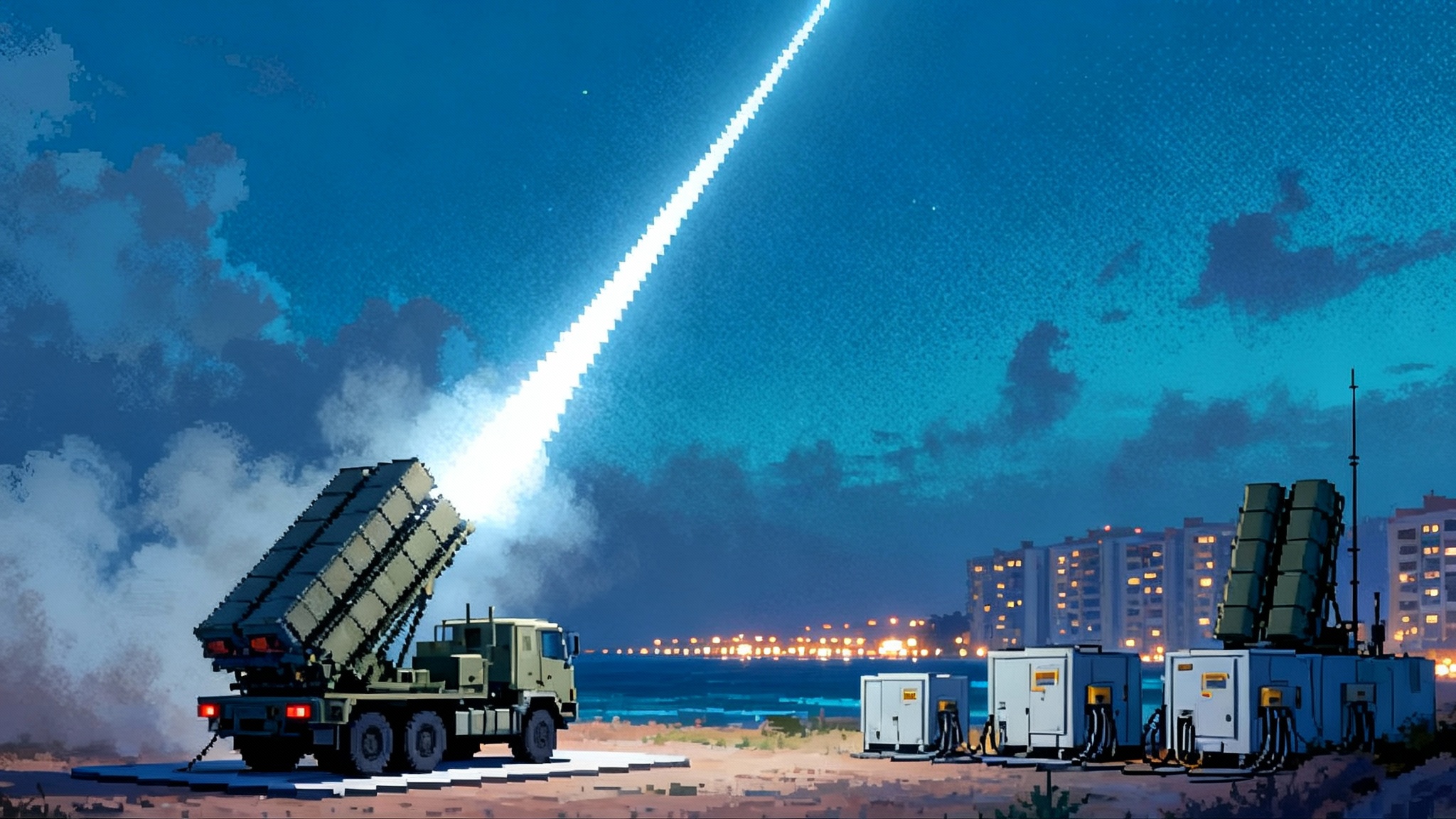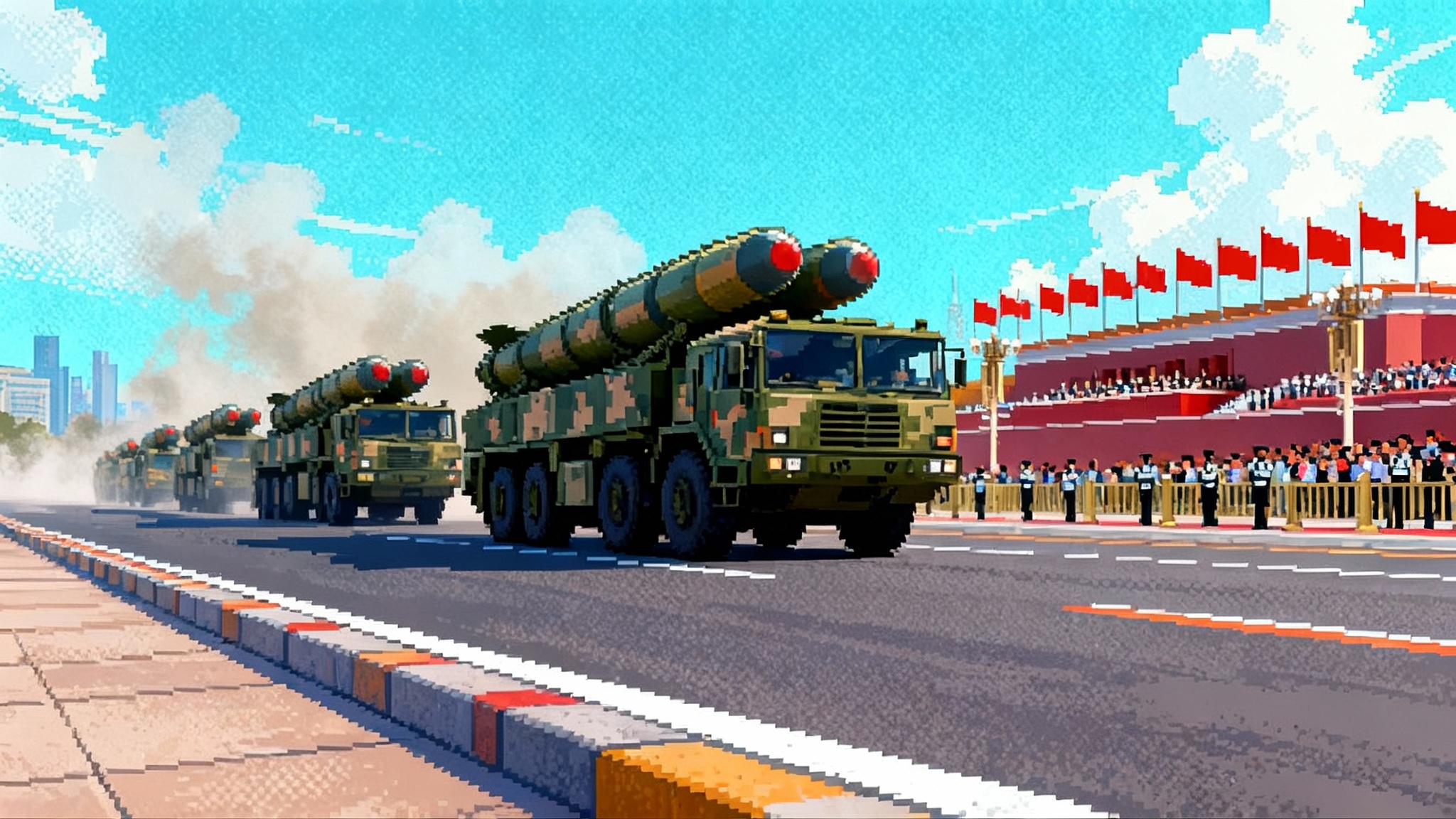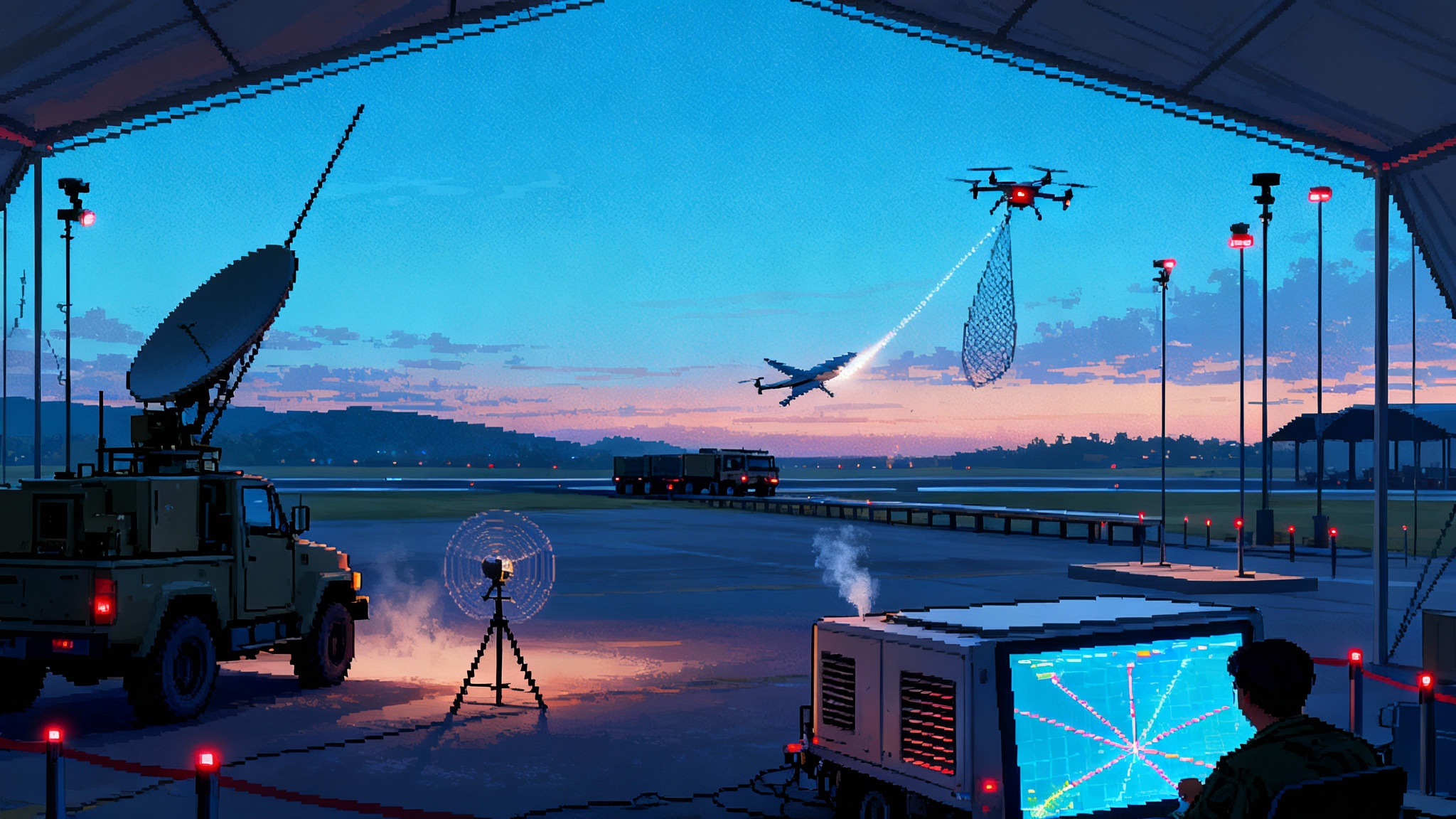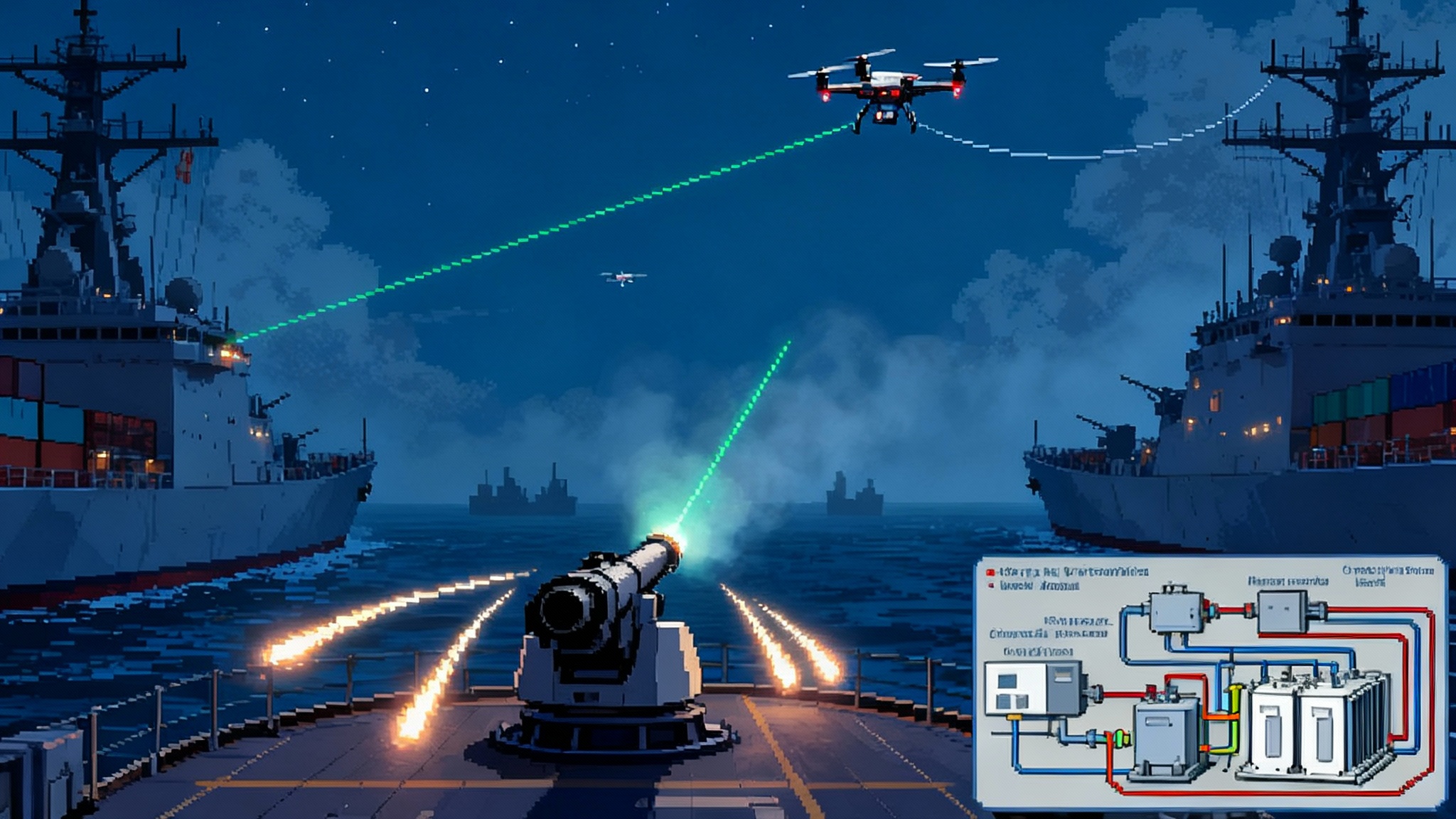Iron Beam Goes Live: Lasers Rewrite Air-Defense Economics
Israel says Iron Beam will enter service in 2025 after completing operational testing on September 17, 2025. Here is how lasers reshape costs, doctrine, and countermeasures in a layered shield with Iron Dome.

Lasers just crossed the line from demo to duty
On September 17, 2025, Israel’s Defense Ministry said its Iron Beam laser had completed a full operational test campaign and would be ready for military use this year. The announcement, carried by Reuters on operational milestone, framed Iron Beam as a complementary layer that takes the cheapest shots in Israel’s layered shield while leaving missiles for the hardest problems. It also marks the moment when cost-per-shot economics, not just physics, start to drive air defense.
“Operational” is a loaded word in defense. In practice it means crews, doctrine, and integration, not only a successful demo video. For Iron Beam, it signals that the system will be posted to real sites, wired into Israel’s command-and-control network, and tasked to defeat live threats under real weather and clutter.
What operational means in practice
Think roles first. Iron Beam is built to defeat short-range rockets, mortars, small UAVs, and some low-flying aircraft within line of sight. That is the high-volume, low-cost tier of the threat spectrum that burns through interceptor stockpiles. In a layered defense, the laser becomes the default tool when the atmosphere cooperates. Engagement managers will route small and medium targets to the laser first, reserving Iron Dome’s Tamir interceptors for leakers, bad weather, and harder profiles. David’s Sling and Arrow stay pointed at longer ranges and higher altitude.
Fielding in 2025 almost certainly starts with fixed or semi-fixed sites protecting high-value assets and densely populated areas. Expect tactical employment around border cities in the north and south, around bases that must ride out saturation fire, and around key grid or industrial nodes. The first units will likely be in places where the environment is friendly to optics and where logistics can supply steady power and cooling.
Integration is the unlock. Iron Beam’s sensors and beam director will live inside Israel’s existing radar, cueing, and battle-management backbone. That means shared tracks, shared kill assessments, and shared prioritization. Crews will practice mixed fires: the laser burning down the bulk of simple threats while Iron Dome takes hard-angle shots, cluttered tracks, or anything arriving through cloud or rain.
The new math of air defense
Lasers change budgets because they change the denominator. A Tamir interceptor reportedly costs tens of thousands of dollars per shot. A laser shot consumes electricity and a little hardware wear. That is not free, but it is negligible compared with an interceptor. If a battery faces hundreds of cheap rockets or drones a day, the budget delta becomes strategic. For a deeper take on the economics, see our cost per shot analysis.
The effect is not only cost avoidance. It is magazine depth. A laser battery’s endurance is limited by power and thermal management, not by how many canisters sit on a truck. That matters in prolonged engagements when resupply is contested. If the grid or generators hold, the battery can keep shooting.
Do not fixate on dollars alone. A laser battery still requires upfront investment, trained crews, rugged power modules, cooling loops, and maintenance. Electricity and chillers are real line items. But for every thousand basic threats engaged by light instead of explosives, the life-cycle savings compound. More importantly, the commander gains freedom of action because every target no longer consumes a finite missile.
Weather and power are the leash
Lasers are precision heat over time. Anything that eats that heat, scatters it, or shortens dwell time hurts performance. Fog, rain, marine layer, dust, smoke, and aerosols all degrade the beam. So do long slant ranges through dense air or turbulence near the ground. In coastal Israel, humidity and haze roll in; in border regions, dust and smoke are common. Iron Beam’s schedulers will bias toward daytime blue-sky shots or clear night air and will hand off to interceptors when the atmosphere turns against optics.
Power is the other constraint. High-energy lasers draw serious electricity and then must dump waste heat quickly. That means generators, grid hookups, batteries, and industrial cooling. Commanders will manage power budgets just like they manage missile inventories today. If multiple beams share a power bus, concurrency is limited. If the system has to track many targets at once, dwell management and aimpoint choreography become as important as raw power.
None of this is new to laser engineers. What is new is doing it on the clock, at scale, under attack, and across months of operations. That is what operational will test.
How it fits with Iron Dome
Israel built the modern template for layered air defense. Iron Beam is an economic and tactical insert into that template, not a replacement. In mixed batteries, the laser will likely sit near Iron Dome launchers and share radar tracks. A typical engagement stack could look like this:
- Early warning sensors detect a salvo and create tracks.
- The fire-control network classifies targets by size, speed, and trajectory.
- The scheduler assigns simple rockets, mortars, and many drones to Iron Beam if line of sight and weather are good.
- Tamir interceptors launch only for targets that are high-risk, complex, maneuvering, or masked by weather and clutter.
- If the laser fails to neutralize a track within a short dwell window, the system can still kick a missile, preserving defense in depth.
This is economy of force made physical. The laser trims the long tail of cheap incoming rounds. Missiles focus on the handful of threats that justify their cost and kinematics.
The United States and United Kingdom are close behind
The United States has been testing shipboard high-energy lasers, notably the HELIOS system on the destroyer USS Preble. In 2024 the Navy validated a drone kill in a test reported publicly in early 2025, and the service has installed Aegis software hooks across several destroyers for potential expansion. HELIOS is not yet a fleetwide capability, but the pattern is clear: integrate the laser with combat system software, practice under way, and learn the doctrine of when to fire light instead of a missile. For broader context, see how recent layered defenses at sea are evolving under real-world pressure.
The United Kingdom has pressed its DragonFire program forward and, crucially, brought timelines left. In April 2024 the government announced DragonFire would be fitted to Royal Navy ships starting in 2027, and highlighted a per-shot cost on the order of ten pounds. See the official UK timeline and economics.
When one ally fields a combat-ready laser on land and another moves to sea installation windows, doctrine travels fast. Tactics from Israel’s towns will inform ship defense in the Red Sea and North Atlantic, and vice versa.
What changes when lasers enter the fight
- Doctrine tilts from magazine management to power management. You husband megawatt-hours and cooling capacity the way you used to husband interceptors.
- High-volume small threats lose their economic leverage. A swarm of cheap drones remains a problem for tracking and sensor saturation, but not every airframe consumes a missile anymore.
- The role of weather becomes decisive. Commanders will plan defenses around seasonal fog, haze corridors, and the timing of smoke-generating fires. Offense will plan through the same lens.
- Battle management matters more. Lasers thrive on tight cueing, precise aimpoints, and rapid kill assessment. Networks and software become the weapon.
- Training changes. Crews must learn how to walk the laser through a target, where to hold a beam, how to triage when the bus is power-limited, and when to hand off to a missile without delay.
Expect smarter countermeasures
Adversaries adapt. Lasers reward the offense for anything that soaks up heat, breaks line of sight, or shortens the available dwell time. The immediate playbook includes:
- Smoke and aerosols. Airborne particles scatter and absorb energy. Purpose-built smoke rounds or area burners can force handoffs to missiles.
- Reflective or ablative skins. Shiny or sacrificial coatings can delay heating and buy seconds. No surface is perfectly reflective across relevant wavelengths, but even a few seconds matter.
- Spinning and tumbling projectiles. Rotation spreads the heat load and slows penetration to a critical part of the target.
- Saturation tactics. Overload sensors with numbers and geometry while the defender is power limited or cooling constrained.
- Terrain masking and low, fast approaches. Anything that reduces line of sight or forces short dwell windows complicates laser shots.
The defender’s counter to the counters is multi-spectral sensing, rapid track handoff, and a layered mix of effectors. Lasers will not remove the need for missiles and guns. They will reduce how often you must use them. For how ground forces are adapting, see recent EW first counter drone kits.
The physics inside the kill
A high-energy laser does not explode a target. It deposits energy at an aimpoint until something critical fails. On a drone that might be a motor, control surface, or battery pack. On a rocket it might be the casing wall next to propellant, leading to rupture. Because it is a heating problem, precision and steadiness matter. The beam must stay on the right spot long enough to push the material past a threshold. That is why turbulence, jitter, and target motion are central to performance.
Modern systems pair good beam quality with adaptive optics and fast gimbals. They also use smart aimpoint logic. If you know where the energy will do the most work, you can reduce dwell time and increase kills per minute. This is where software and testing cycles pay off. It is also where integration with the radar picture becomes decisive. If the network can tell you a projectile’s type and orientation, your aimpoint gets smarter.
Budgets and force design
If Iron Beam performs as advertised, finance teams will start asking hard questions. How many interceptors can you defer if lasers take the daily grind of low-end threats. How much generator capacity and cooling do you need at a base to sustain a week of laser-heavy defense. What is the right mix of trucks, trailers, and fixed power modules. The first wave of buys may look like boutique kits, but the second wave will look like infrastructure.
Navies will ask similar questions at sea. Ship classes with more power headroom will become more valuable. Combat system software that can schedule laser shots alongside missiles becomes a fleet multiplier. The procurement bias shifts toward platforms that can host big power and big chillers.
Exports, proliferation, and policy
Israel’s defense industry exports. Partners will ask for Iron Beam or for co-developed variants. Any export path will be shaped by shared technology with U.S. firms, by optics supply chains, and by policy choices about where lasers belong. Expect a line of interest from countries with bases, refineries, and cities under drone or rocket threat.
Proliferation concerns are real but different from the usual missile-export debate. A city-defense laser is not a precision strike weapon. The humanitarian and legal conversation will focus on safety and rules of engagement. High-energy lasers used for air defense are legal under international law, but there are separate restrictions on blinding lasers. Base and city defense will require strict procedures to avoid eye hazards to friendly forces and civilians, especially around airports and dense urban airspace. Expect clear no-fire zones, minimum elevation rules, and automatic safe modes when aircraft transponders are detected.
There is also a grid and infrastructure angle. A laser-protected city is a city that must protect its power and cooling. Offense will notice. Expect redundancy plans and protected microgrids at key sites. Cybersecurity matters too because a laser battery is a node in a network. You cannot afford spoofed tracks or disabled chillers during a saturation attack.
The road ahead
By making a laser operational in 2025, Israel has turned a long list of tech hypotheses into tactics. The first year will surface the real lessons: maintenance burdens, weather thresholds, power scheduling, and the human factors of running a beam under pressure. It will also change the enemy’s playbook. The rest of the world will be watching those feedback loops.
The U.S. Navy’s progress at sea and the U.K.’s decision to begin shipboard fits in 2027 show that this is not a one-off. When at least two allied services can fight with light, doctrine will propagate quickly. Missiles remain essential, but the economics of defense have tilted. Lasers will take the daily grind, missiles the exceptions.
The biggest test is not whether lasers can kill. They can. The test is whether crews, networks, and power systems can keep them killing all day under real weather and real stress. Iron Beam is about to answer that question at scale. If it does, air defense will not be the same.



